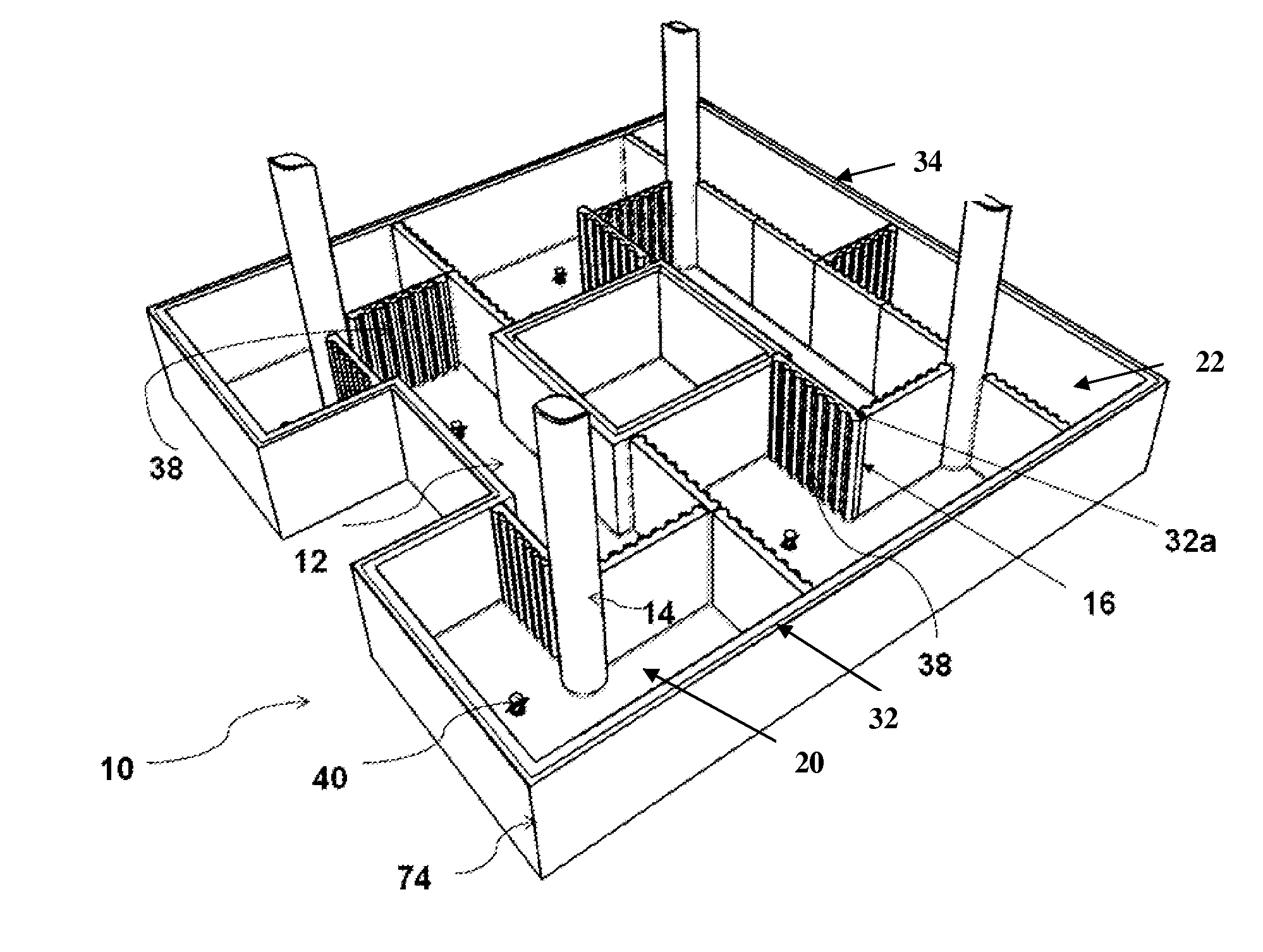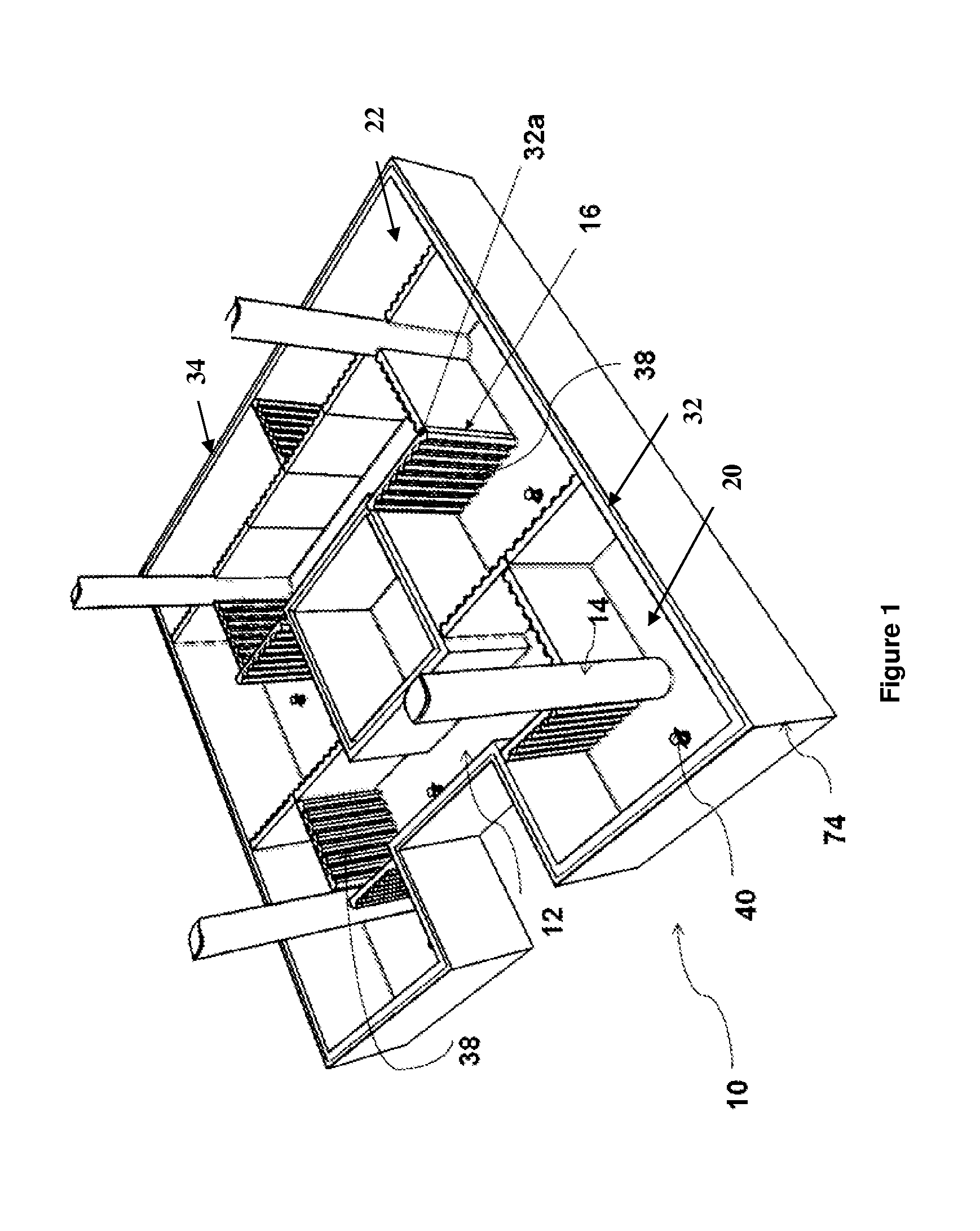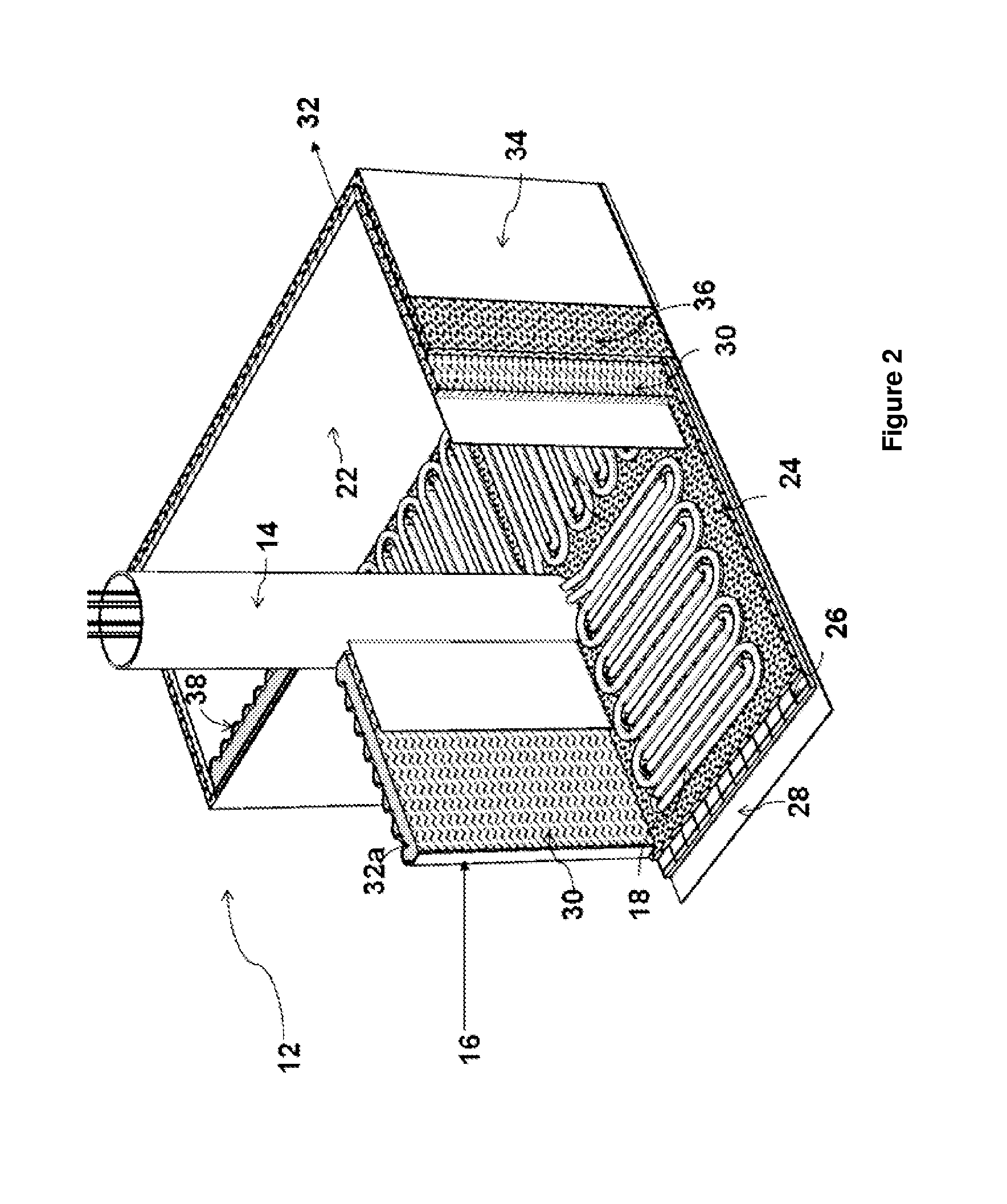Enclosed offshore tank for storing crude oil
a technology for offshore tanks and crude oil, which is applied in the direction of auxilaries, floating buildings, containers, etc., can solve the problems of inability to store, serious production compromise, and inability to build a conventional production platform, and achieve the effect of avoiding heat loss to the environmen
- Summary
- Abstract
- Description
- Claims
- Application Information
AI Technical Summary
Benefits of technology
Problems solved by technology
Method used
Image
Examples
Embodiment Construction
[0053]A variety of techniques have been employed in order to reduce problems associated with flow assurance caused by various reasons including crystallization of paraffin during production, transportation and / or storage of crude oil. Rate of paraffin / wax deposition in an enclosed offshore tank or storage system can be reduced by injection of paraffin / wax dispersant chemicals, which can reduce deposition rates by up to five times. However, operating an enclosed offshore tank storing crude oil at temperatures above wax appearance temperature is preferable. In the present invention, the term paraffin and wax are used interchangeably. The present invention relates to an enclosed offshore tank requiring minimum intervention and built in redundancy for storing crude oil in a flowable form where the problems associated with flow assurance are prevented. The enclosed offshore tank comprises a floor, an insulated top cover and perimeter wall secured to a floor forming the offshore tank. In ...
PUM
 Login to View More
Login to View More Abstract
Description
Claims
Application Information
 Login to View More
Login to View More - R&D
- Intellectual Property
- Life Sciences
- Materials
- Tech Scout
- Unparalleled Data Quality
- Higher Quality Content
- 60% Fewer Hallucinations
Browse by: Latest US Patents, China's latest patents, Technical Efficacy Thesaurus, Application Domain, Technology Topic, Popular Technical Reports.
© 2025 PatSnap. All rights reserved.Legal|Privacy policy|Modern Slavery Act Transparency Statement|Sitemap|About US| Contact US: help@patsnap.com



